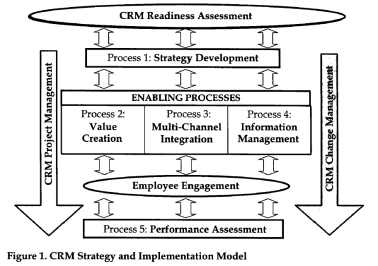Hello again guys and welcome!! As mentioned in my last post, today, I’m doing to introduce you guys E-CRM. The key learning objectives for this post will be the importance of and how to implement an e-CRM Strategy.

Firstly, as Payne and Frow (2006) highlights the purpose of CRM is to ‘efficiently and effectively increase the acquisition and retention of profitable customers by selectively initiating, building and maintaining appropriate relationships with them’. While, in addition, Kelley et al. (2003) refers to eCRM as ‘the marketing activities, tools and techniques delivered via the Internet which includes email, world-wide web, chat rooms, e-forums, etc., with a specific aim to locate, build and improve long-term customer relationships to enhance their individual potential’. From my in-depth research I have found e-CRM is exceptionally important and can greatly help ye in the following ways:
- A key benefit is to enhanced customer interactions and relationships
- Improved customer data intelligence facilitating product/service development based on customers’ requirements
- Single customer view of the customer across the organisation to improve efficiencies in sales, marketing and customer support thus enhancing the customer experience.
It has been suggested that in order to effectively implement an eCRM strategy there needs to be a collaboration between marketing, sales, finance, IT and change management functions within the organisation (Payne et al, 2006).
So a crucial question ye may asking is how can companies improve success rates from implementing strategies? Well, Payne and Frow (2006) suggest the below CRM Strategy and Implementation model is the answer.

- Strategy development: Customer strategy must be aligned with overall business strategy
- The value creation process: Develop value propositions to meet customer needs throughout the customer lifecycle
- Multi-channel integration: Decide the best combination of channels which ensures a positive interaction between the customer and the organisation
- Information Management: Single customer view of customer data to ensure a positive experience by the customer at different touch points with the organisation
- Performance assessment: Metrics for measuring performance against CRM objectives
- Implementation: Effective change and project management supported by top management to ensure employee engagement.
I hope ye found this post interesting and have learned how to effectively engage with customers from it. Next time, we will be discussing how ye can effectively collaborate an e-CRM strategy with ye’re Integrated Marketing Communications.
References:
- Chen, Qimei and Chen, Mei-Hong (2003), “Exploring the success factors of eCRM strategies in practice”, Database Marketing and Customer Strategy Management, Vol. 11, 4, 333-343
- Payne, Adrian and Frow, Pennie (2006), “Customer Relationship Management: from Strategy to Implementation”, Journal of Marketing Management, Vol.22, pp. 135-168
- Saini, Amit, Grewal, Rejdeep, Johnson, Jean L. (2010), “Putting market facing technology to work: Organisational drivers of CRM performance”, Vol. 21, 365-385.




